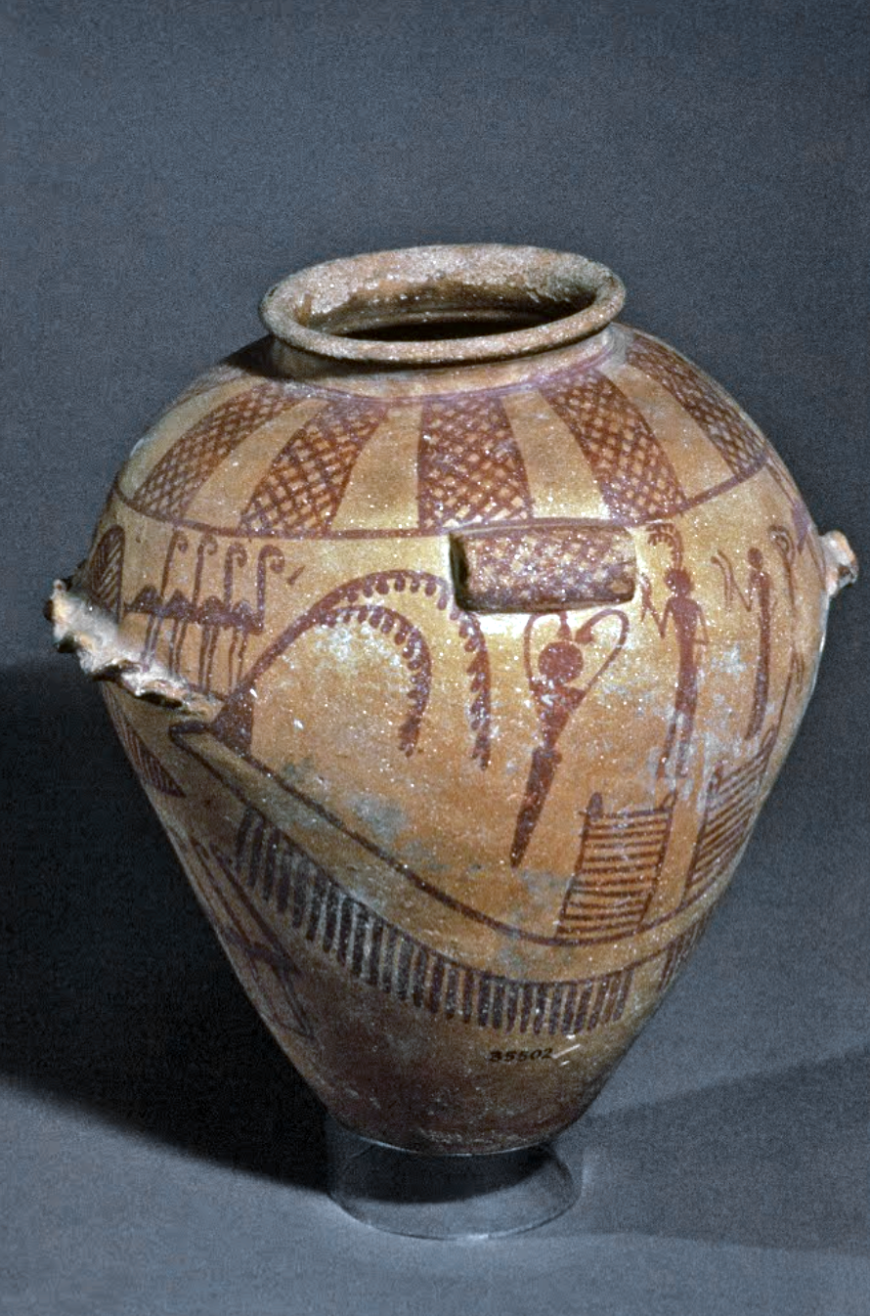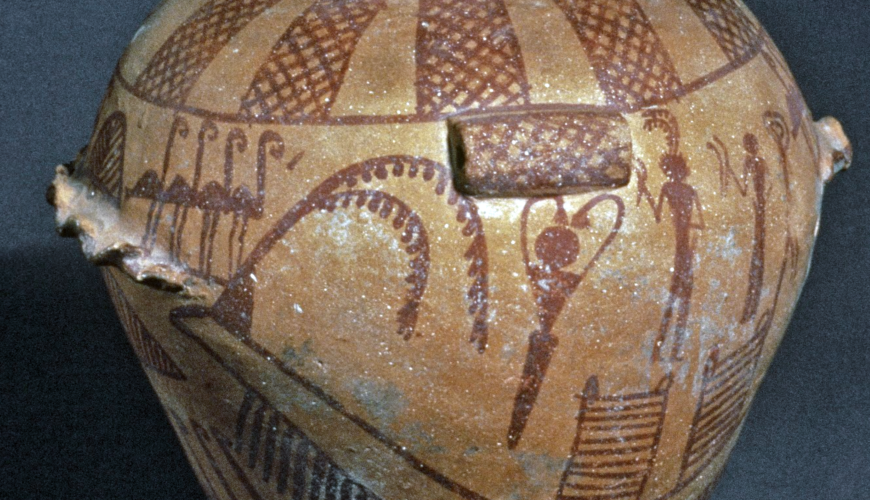
Decorated jar, c. 3500 B.C.E., predynastic period (Naqada II), pottery, found in a tomb in el-Amra, Egypt, 22.5 cm in diameter (© Trustees of the British Museum)
Light-colored pots like this one, made of marl clay mined from desert wadis and painted with red ochre pigment, are known as Decorated ware. They are characteristic of later Predynastic times (c. 3500–3200 B.C.E.). The most intriguing are those painted with boats and human figures. This pot comes from the tomb of a young woman, at el-Amra in Middle Egypt, but pots showing boats have been found throughout Egypt and into Nubia. The boats are always strikingly similar, with a curved hull, a large number of oars, and two cabins in the center. Attached to one of the cabins (usually the right-side one) is a pole bearing an emblem, which may be the symbol of a god or a place.

Decorated jar, c. 3500 B.C.E., predynastic period (Naqada II), pottery, found in a tomb in el-Amra, Egypt, 22.5 cm in diameter (© Trustees of the British Museum)
A boat is drawn on each side of this pot. Above them are stylized human figures: a dancing woman with her hands raised over her head, and two men holding clappers or casinets. The woman is perhaps a goddess or priestess, and the scenes on this pot can be understood as episodes in a ritual or ceremony. On one side, the woman is called forth from the boat by the playing of one man, while the other man helps to raise her up. On the other side, both men beat out the tune, as she dances for them, conferring her blessings on them. The feathers worn in the hair of one man represents victory.
The full meaning of these scenes is still debated. Decorated ware is found mainly in graves, so the paintings may depicts the funeral procession. However because similar scenes are also known from desert rock art, the rituals may more broadly be associated with fertility and rebirth of the both humans and the land. Such concerns were important throughout Egyptian history. The ostriches, known for their large eggs, and the small bushes, also shown on the pot reinforce the message of fertility and rebirth.
The lack of variation in style, shape, and motifs of decorated pottery suggests that these vessels were manufactured at a limited number of workshops; close scrutiny has even identified the work of individual artists. The artist who painted this pot probably made at least two others found in cemeteries up to 60 km away. The development of a trade and transport system to distribute pottery was one of the critical steps towards the formation of Dynastic civilization.
© Trustees of the British Museum

